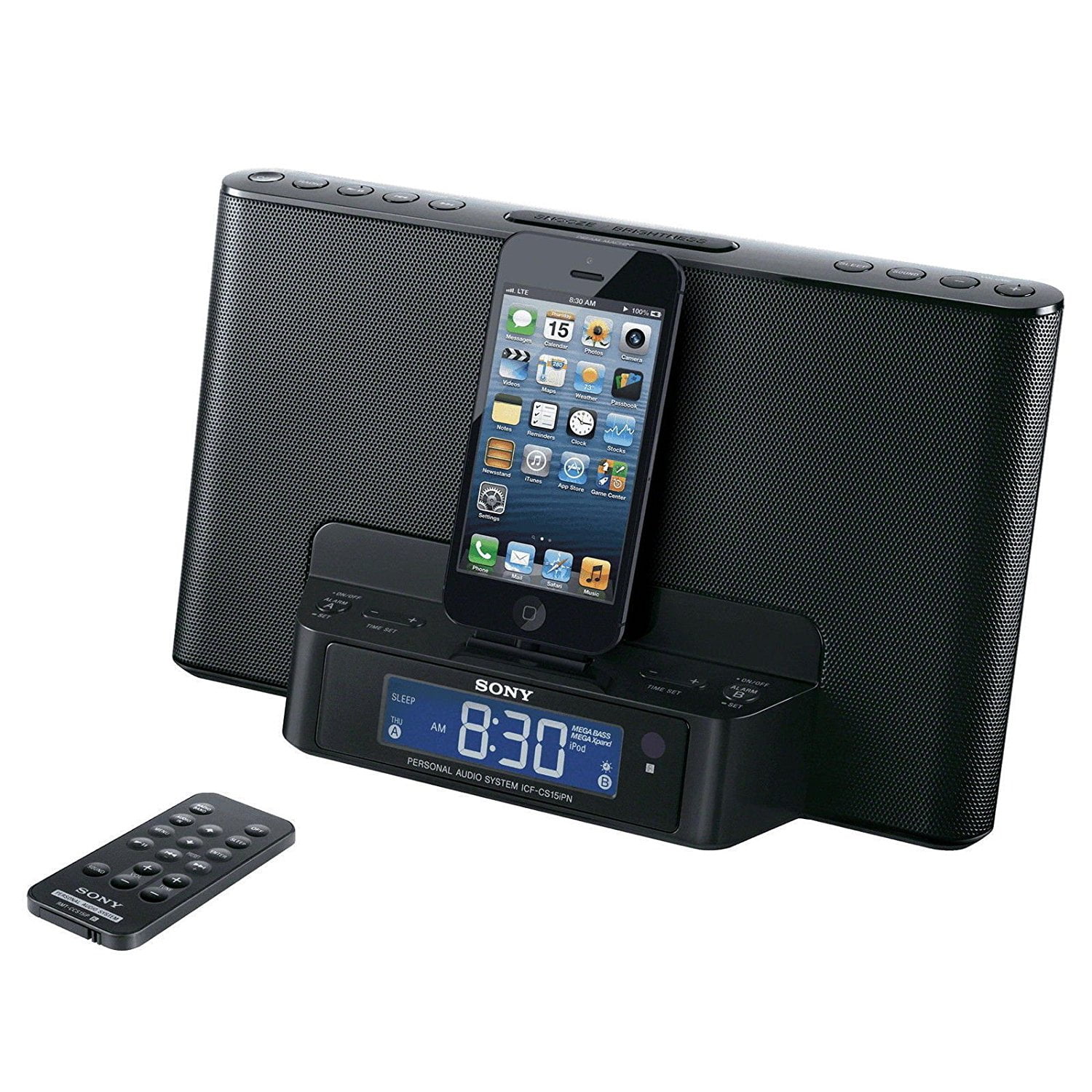

Whereas iHome includes three Dock Adapters for its Universal Dock, Sony has a rear-mounted dial that adjusts a plastic pad to keep whichever iPod or iPhone you’re using from touching the unit’s metal grille. First, there’s a small difference between the units’ docks. The interference is more noticeable in the FM radio, and then even more in the AM radio having your iPhone on a local Wi-Fi network or avoiding data services while in the dock will reduce these issues dramatically.Ī couple of other small differences are also worth noting. Thankfully, only a hint of the noise can be heard at a very low volume during music playback, and then only when the speaker is on, the music is either silent or nearly so, and a local cell phone tower is being accessed.
Sony ipod dock clock radio review free#
Though both systems carry Apple’s certification, neither one is completely free from the TDMA interference that could be heard in earlier iPod-only audio systems. IPhone compatibility is also basically the same in both units.
Sony ipod dock clock radio review drivers#
Neither unit’s speakers have dedicated bass or treble drivers, so the two drivers found in each system are trying to cover as much of the spectrum as possible, and exhibit a par level of distortion for their prices. You may need to play with the iP99 to get its audio to your liking, but there’s a better chance that you’ll be able to tweak it to some personally acceptable level ICF-C1iPMK2 doesn’t have any audio adjustment except for Mega Xpand. Speaker quality isn’t stellar in either system, but the iP99 has the edge thanks to both user-adjustable treble and bass controls, as well as the ability to produce sound that’s a little warmer than the ICF-C1iPMK2. None of these are huge differences, but they may matter to some users. 1 increment tuning versus iHome’s faster. The iP99’s buttons and dials are easier to use than ICF-C1iPMK2’s 22-button design, which offsets its one benefit-radio station seeking-with slower. iHome’s alarms offer everyday, weekday, or weekend settings-also called 7-5-2-while Sony’s don’t the real estate on iP99’s screen is also used more effectively for time and date information, with larger, less cluttered text than on the ICF-C1iPMK2, and eight stages of dimming versus Sony’s three.

In other categories in which these two products compete, however, the iP99 is a little bit better.

You can decide for yourself which design you prefer apart from color, we found the two systems to be roughly peers. While the iP99 is only sold in matte black, the ICF-C1iPMK2 is sold in combination matte and glossy black or white versions the dock is glossy while the rest of the casing is matte. Apart from their orientations, both systems otherwise share extremely similar design characteristics, such as metal front grilles, twin control circles with buttons in the middle, and white text-on-black clock screens. Similarly, though it’s an inch and a half wider at 11.75” and two inches taller at roughly 5.13”, the height difference isn’t critical in practice: iHome’s design has an iPhone or iPod standing roughly 7” from a table’s surface, while Sony’s keeps even the super-tall iPhone at only 5.75” in height. This design enables the 5.5” deep ICF-C1iPMK2 to preserve most of the cabinet area of the iP99 while shaving an inch or so off of its depth. In essence, the ICF-C1iPMK2 is the physical equivalent of iHome’s earlier iPhone clock radio iP99 turned on its face and reclined, with buttons relocated to its top and its clock face placed immediately below a Universal Dock that juts permanently out of its bottom.


 0 kommentar(er)
0 kommentar(er)
